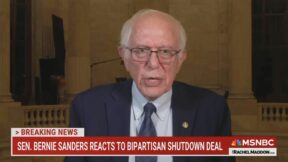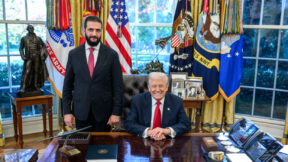How To Cover A Protest (Starting Today)
 TIP 1: Tell the story of the protestors not the story of the protest
TIP 1: Tell the story of the protestors not the story of the protest
Sometimes it takes rather raucous, even unlawful protests for the voiceless to be heard. And sometimes the protests themselves are rather unremarkable events — some people show up, occupy a building, the police disperse them and everyone goes home. And yes, activists can and do more to create interesting, newsworthy protests. But still, journalists should understand the reason to cover protests isn’t the protest itself but the people who assemble there — the characters in a larger story of ordinary Americans fighting the extraordinary powers that be. Journalists need stories. Protests are brimming with them.
TIP 2: Cover the middle of the margin
Protests are generally about marginalized communities — those who don’t have formal power and can only achieve change by, together, confronting those who do have power. But the history of protest journalism is littered with examples of reporters highlighting the fringe of the margins — for instance, not the working class lesbian moms marching in a gay rights parade for their basic dignity, but the man-boy love association contingent that wants to legalize pedophilia. Sure, sometimes the “fringe” points to a dangerous trend within the movement — for example, the consistent prevalence of overtly racist signs and slogans within Tea Party protests. But in general, the few violent punk anarchists or Black Panthers do not represent the norm. At the very least, responsible journalists contextualize acts of violence or destruction where they do occur as not the norm in that protest if they are, in fact, aberrant.
Similarly, the so-called “grasstops” of a protest also doesn’t represent the norm — the wealthier, well-connected protestors who already carry status and legitimacy. For instance, a celebrity might draw you to cover a protest — but try not to insult the ordinary people for whom that celebrity is fighting by only quoting or over quoting the famous one.
TIP 3: Small protests can make a huge impact, so don’t dwell on numbers
It was one street vendor in Tunisia setting himself on fire that sparked people’s movements in that country and across the Arab world. Cindy Sheehan’s encampment outside George W. Bush’s Texas ranch sparked a movement of mothers of deceased soldiers and other advocates stepping out of the woodwork to oppose the war in Iraq. Rosa Parks refusing to move to the back of the bus. Four young African American men sitting at a whites-only lunch counter. Throughout the history of the United States and the world, small protests have made an enormous difference. If you get caught up in the details of how many people came to the protest — or, for that matter, what they were wearing, etc. — you may miss the larger point.
TIP 4: Remember that protest is as American as apple pie
Without protest, direct action and civil disobedience, there would not be a United States of America. The original Boston Tea Party was a protest. The American Revolution was a form of protest. And every great accomplishment since, in the perpetual task to perfect our union, has been the result of protest — from abolishing slavery to granting women the right to vote to establishing civil rights laws and desegregating America to increasingly embracing immigrants, gay people and more. In a political system in which corporate interests hold structurally more sway than the votes of the people, the people need other avenues to make change. Disrupting the status quo to draw attention to an alternative vision in the service of collective prosperity is an American tradition.
Already, this year has seen more news coverage of protests and citizen movements than many years’ prior — from Madison to the Mojave and in between. And much of this coverage has been not only informative but inspiring — reminding all of us of the power of a few committed individuals working together for change. Yet there’s no doubt that a large part of what drove the coverage was the significant scale of the actions. In between, there have been hundreds if not thousands of small and medium size acts of civil disobedience and direct action that, perhaps while less significant in size, are no less significant in the story the tell. And it is these stories that may be like the Tunisian fruit vendor or Rosa Parks — protests that see small and insignificant protests, until we all realize they’re not.
A spirit of people’s movements and social change is sweeping the globe. Grab your notebook, your camera, your microphone — and help tell the story of the future.
PS — If you want to practice today in New York, check out OnMay12.org — a full day of teach-ins and civil disobedience to protest the fact that, as governments cut social services and teacher salaries, the big banks continue to make record profits but pay zero taxes.
Sally Kohn is a political commentator and community organizer. She is the Founder and Chief Education Officer of the Movement Vision Lab.
Pages: 1 2
This is an opinion piece. The views expressed in this article are those of just the author.




